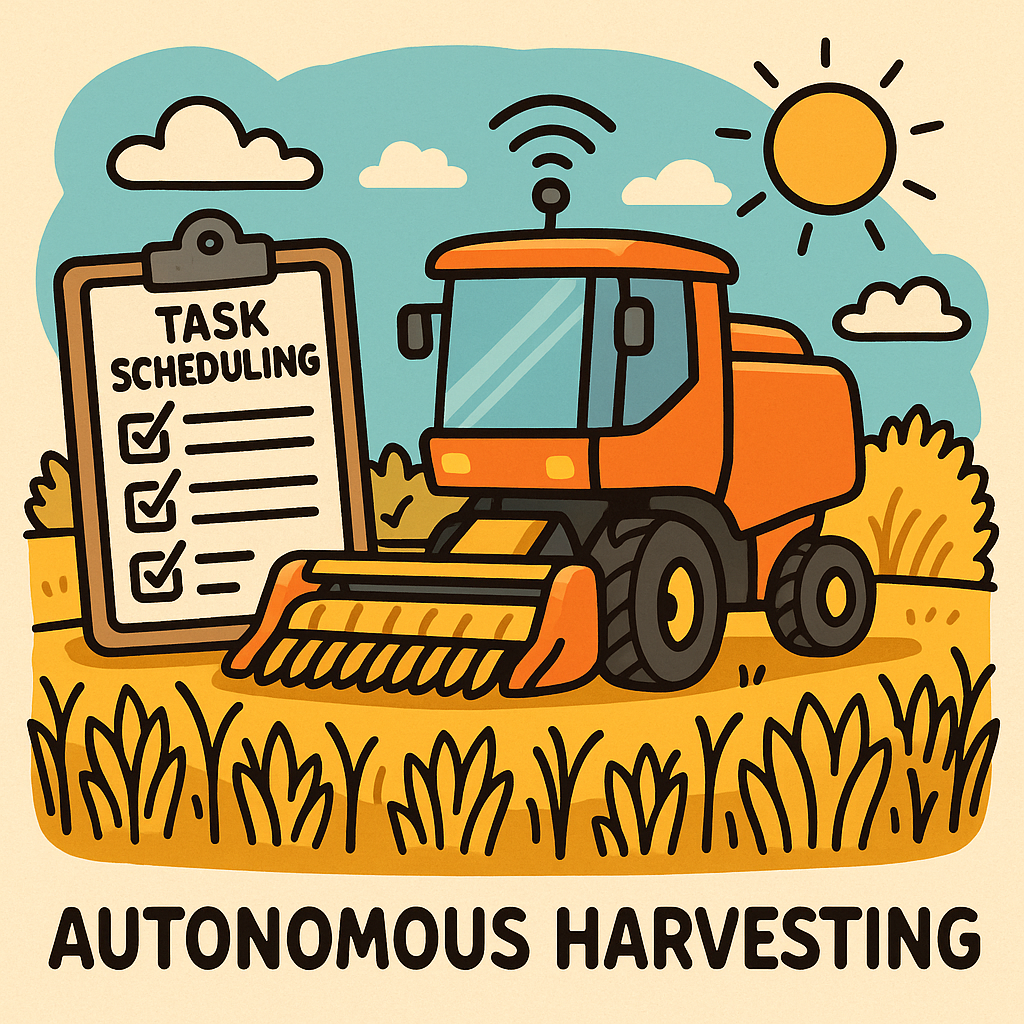Understanding Real-Time Operating Systems (RTOS) in Autonomous Harvesting
As the agricultural sector increasingly embraces automation, optimizing real-time task scheduling in Real-Time Operating Systems (RTOS) becomes paramount. Autonomous harvesting equipment, such as robotic harvesters, relies heavily on precise control systems that process sensor data and execute commands in real time. However, the challenges of maintaining low latency and high reliability in task scheduling can complicate these systems.
The Challenges of Real-Time Task Scheduling
In a typical RTOS environment, tasks are scheduled based on their priority and timing constraints. However, in the context of autonomous harvesting, tasks such as sensor data acquisition, movement control, and image processing must be coordinated seamlessly. The major challenges include:
- Latency: Any delay in processing sensor input can lead to suboptimal harvesting decisions, risking crop damage or inefficient operation.
- Resource Constraints: Autonomous systems often operate on limited hardware resources, which requires careful allocation of CPU cycles and memory.
- Determinism: Tasks must be executed in a predictable manner to ensure the system behaves as expected under varying conditions.
Designing for Precision Control
Precision control in autonomous harvesting dictates that each task’s execution time must be minimized without compromising the quality of the output. Here, the choice of scheduling algorithms plays a crucial role. For instance, Rate Monotonic Scheduling (RMS) is a popular fixed-priority algorithm that can be effective; however, it may not always guarantee optimal CPU utilization in scenarios with high task variability.
Instead, many engineers lean towards Earliest Deadline First (EDF), where tasks are prioritized based on their deadlines rather than static priorities. This approach allows for dynamic task management, adapting to real-time conditions which is essential for harvesting operations that can suddenly shift due to unforeseen environmental factors.
Hardware Considerations
When it comes to hardware, the choice of microcontroller or microprocessor is critical. For instance, using a processor with a dual-core architecture can significantly enhance performance. One core can handle high-priority tasks like navigation and obstacle avoidance, while the other manages lower-priority tasks, such as data logging. This separation ensures that time-sensitive operations are not delayed by less critical processes.
Additionally, integrating FPGA (Field Programmable Gate Array) components can offload specific tasks, such as image processing or signal filtering, from the main processor. This not only frees up CPU time for more critical operations but also ensures that these demanding tasks are processed in parallel, further reducing latency.
Firmware Optimization Techniques
Firmware design also plays a pivotal role in optimizing real-time task scheduling. Implementing interrupt-driven architecture allows the system to respond to events in real-time, which is essential for tasks like collision detection. By configuring interrupts to prioritize immediate responses, the system can ensure that critical tasks are executed promptly.
Furthermore, employing task batching can also be beneficial. By grouping similar tasks, such as sensor data processing, the system can reduce context-switching overhead. This not only improves performance but also simplifies the scheduling algorithm, as fewer transitions between tasks mean more consistent execution times.
Real-World Design Tradeoffs
Every design decision comes with tradeoffs. While an EDF approach might maximize responsiveness, it can lead to increased overhead due to frequent context switching, potentially increasing power consumption. This is a significant consideration for battery-operated harvesting equipment. Engineers must balance between responsiveness and power efficiency, often opting for a mixed strategy that combines fixed and dynamic scheduling techniques based on the operational context.
Another aspect to consider is the robustness of the system. Autonomous harvesters must operate in unpredictable environments. Implementing fault-tolerant designs, such as redundant sensors and fail-safe mechanisms, is essential. These systems can introduce additional complexity in scheduling, as they may require higher priority handling during fault conditions.
Ultimately, optimizing real-time task scheduling in an RTOS for autonomous harvesting equipment is a delicate dance of engineering principles, hardware capabilities, and environmental considerations. It’s about crafting a system that not only meets the immediate needs of precision control but also adapts gracefully to the challenges presented by the dynamic agricultural landscape.



